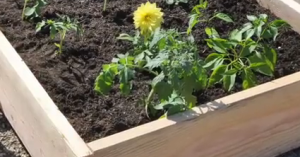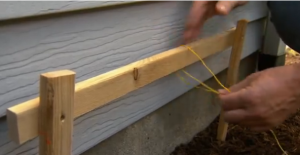Just as fencing helps gardeners with climbing plants, there’s been a wave of technology that’s been helping those with green fingers to reduce the amount of time they spend on the mundane housekeeping jobs, so that they can concentrate on the fun stuff like planting shrubs and vegetables and putting their stamp on their flower beds.
A good example is mowing the grass, something that most people have to do at least monthly through the summer, if not every weekend or two. Thanks to some clever new gadgets, that could now be a thing of the past. We spoke to John Adams from robotlawnmowers.org, a new site dedicated to these amazing machines, and asked him to tell us a bit about the appeal:
“The best thing about robotic mowers is that they save a lot of time, particularly people with very large grassed areas. Because some of the models are suitable for use all year ’round, they also allow you to have a presentable garden through the winter too, while some people might have given up mowing for the year in early October before the temperatures have fallen enough for the grass to stop growing.”
While the mowers are still quite expensive (they can set you back upwards of a thousand pounds for the top models), if you’re hiring gardeners then there’s a direct saving on their time spent mowing. You simply start them up and they’ll make their way across the lawn all by themselves, as they’ve got built in sensors to know where they’re going and where they’ve been. Even if there’s no monetary saving because you mow the lawn yourself, just think about the extra hour or two relaxing on a Saturday afternoon when you’d normally be out cutting the grass.
As fencers, we were a bit worried about an out of control mower colliding with the new fences we spend a lot of time erecting and our customers pay a lot of money for, but having seen them in action, they’re incredibly accurate and we’ve not seen a single collision!
 As you can see from the above video, it’s more than possible to work direct from a grow bag, but a more popular option seems to be
As you can see from the above video, it’s more than possible to work direct from a grow bag, but a more popular option seems to be  Some aspects of your wood fence need to be given a bit more maintenance than others, and this concerns metal parts and pieces. The best approach here is creating a daily maintenance sheet and doing preventive maintenance if required. In time, dirt and dust will become mixed with the oil you have applied, and this can actually have a reverse effect than what you intended. When you are doing the visual run-down, it is no big deal to look at what is happening with the gate and other areas.
Some aspects of your wood fence need to be given a bit more maintenance than others, and this concerns metal parts and pieces. The best approach here is creating a daily maintenance sheet and doing preventive maintenance if required. In time, dirt and dust will become mixed with the oil you have applied, and this can actually have a reverse effect than what you intended. When you are doing the visual run-down, it is no big deal to look at what is happening with the gate and other areas.